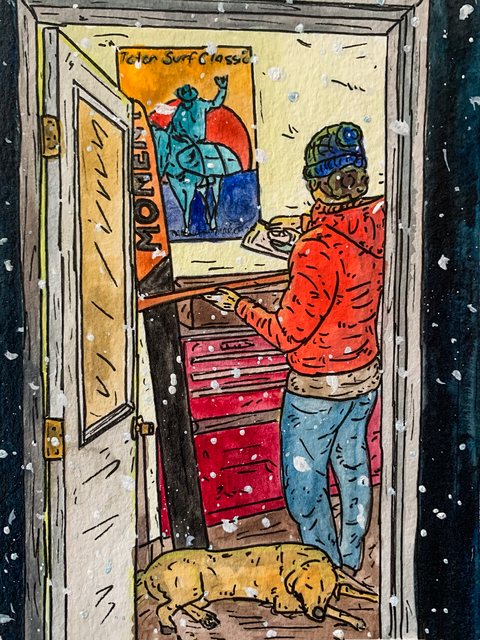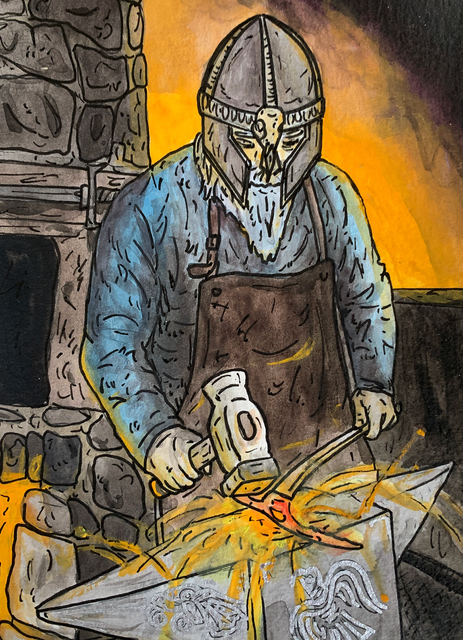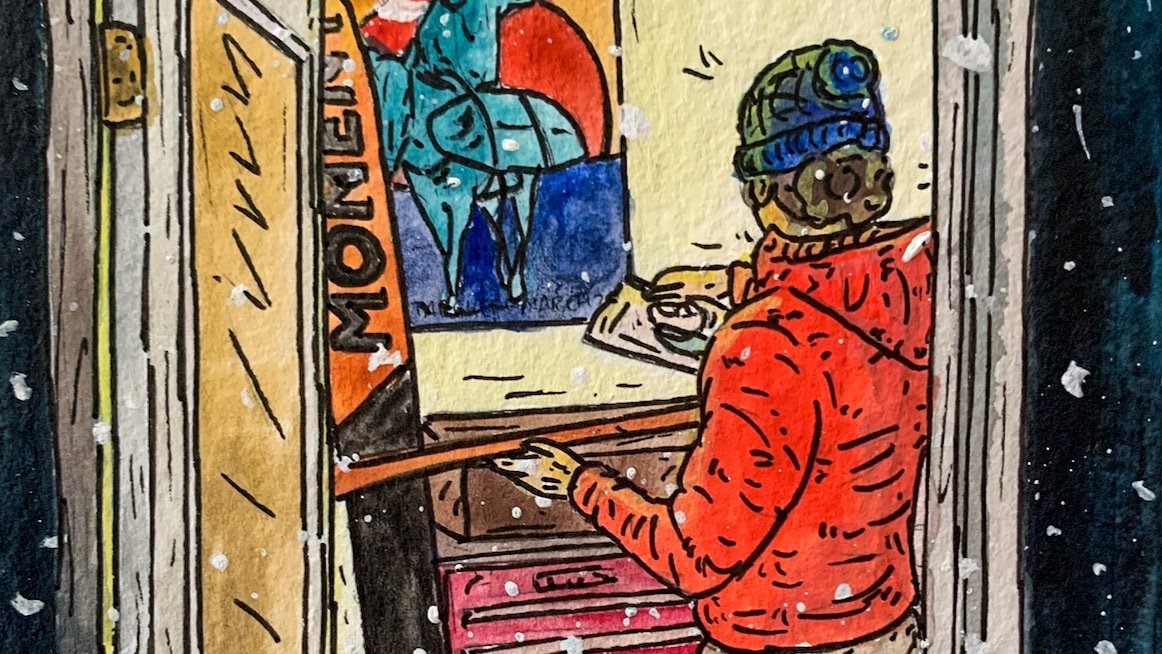As the leaves turn and the first snowflakes fall, I start to take over our kitchen counter with ski gear projects. It’s messy. I should probably mount my bindings and trim my skins and modify my outerwear in the garage. But it’s cold out there, and the dog whines when she has to sit on the cold concrete and watch me fiddle with bindings, and anyway, sitting around and futzing with ski gear is meant to be a communal experience. Crack a beer. Come hang out in the living room and heckle while I try to figure out how to do this obscure task at home, without the right specialized tool. It’ll be fun. It’ll make you love skiing even more.
I love messing around with my ski gear. There’s something really rewarding about adjusting and tweaking and modifying your gear to be perfect. Not capital P Perfect for everyone, but lowercase p, perfect for you, set up just how you like it. Sure, getting a new setup mounted and fit at a shop is the safe move. It’s the easy path to recommend, there’s no awkward liability involved, and you’re (supposedly) guaranteed consistent results. But sometimes that feels a little too sanitized. If skiing is self-expression, if skiing is more of a lifestyle than a sport, I want to learn as many aspects of it as I can.
Sure, you could buy expensive waterproof gloves, but that will never match the sensory experience of taking your new Kinkos hot out of the oven, and carefully kneading the fragrant Sno-Seal into every panel and seam. That’s what makes those gloves yours. And if you end up with oven rack burn marks on a palm, well, that’s just character, and a fun backstory that makes them even more yours. No $200 glove comes with that.
Recently I made a comic for newschoolers suggesting that interested folks should do some homework, crack a beer, and learn how to mount their own skis. The number of upset DM’s in my inbox, incensed that I would suggest tackling this simple task at home with *gasp* alcohol involved was disheartening. I’m not saying you should drop acid and try to make your own bindings out of an old bed frame using an angle grinder and a Harbor Freight welder.
But man, if the stoned, barely trained, underpaid tech at your local shop can manage to correctly mount more skis than they screw up, you can probably figure out how to drill and mount your own skis, while enjoying a hop soda. If you fuck up, well, there’s ways to fix that. They’re just skis after all. And at least you’ll know you fucked up, instead of finding out later that a tech hid a bad mount under the binding.
Skiing is dangerous. We go fast in trees, we jump off cliffs, chairlifts are scary for crying out loud. Spending a few hours learning how to put 16 wood screws in the right places is child’s play comparatively. Work on your gear. Learn how it works. If it's been a while, take your bindings and boots in and pay for a release test. Then get out and ski. Liability should be a dance between risk and reward that you navigate based on your priorities, not a flow chart of what order to sue everyone who’s ever touched your gear.
Cutting skins is a group activity in my house. Usually, I bustle around the kitchen, digging through my box of miscellaneous tip and tail hardware off recycled skins, muttering to myself while my partner does crosswords on the couch and reminds me to be careful with the utility knife and cut away from myself. I stick the trimmed scraps to my dog, she likes to wrestle and worry them as I dial in the fit. Sure, we could pay somebody at a shop to trim our skins, but why? I want to be more connected to skiing, not less.

Sure, you can go to REI and buy your whole setup, and it’ll probably work perfectly for a few years without you ever having to think about or adjust it. That’s fine, no judgment at all. But even if money was no object, I just wouldn’t find it satisfying. Would you?
When I lived in a house with a bunch of other skids, anytime anyone got new skis or a snowboard, we’d all pull out our collective shoeboxes full of stickers and dig through them, suggesting sticker placements and layouts to personalize the new ride. Sure, they might just be Soul 7’s in a sea of similar Soul 7’s, but nobody else is gonna have that OG NS logo sticker on theirs.
Ritual is an important part of my connection to skiing. There are plenty of things I leave to the experts, I’m not doing any DIY boot punching at home. But I certainly wouldn’t love skiing as much as I do if I didn’t get to play with my gear. And it’s wild how much you can do with a cheap drill, the correct bit, an eyelet tool, and a needle and thread.

Some things, like forging ice axes, should be left to the pros.
Install those booster straps on your new boots. Swap out the buckles for your favorite kind and duct tape the seam. Sno-Seal your gloves and add your own wrist straps. Build a beacon anchor into your favorite ski pants. Mount your own skis. Trim your own skins. Put stickers on your helmet. Go ham with paint pens. Put tape on your adjustable poles to make them quicker to adjust to the perfect length for you. Add daisy chains to your favorite pack. Modify your gear. Play with it. Learn it. Forge a connection with the tools you use to ski that’s deeper than the facile “Buy it, don’t really think about it, use it, buy the next shiny thing” paradigm that’s so common.
If you’re on this website, chances are that skiing is something you use to anchor your self-perception. Great, that’s cool! That’s how humans work! Get deeper in your relationship with skiing by leaning into it, learning more of it, becoming more competent at it. Working on your ski gear isn’t some dark art that only licensed professionals should attempt. And it pays off in spades with an increased appreciation for the tools we use to enjoy snowy mountains.


Comments